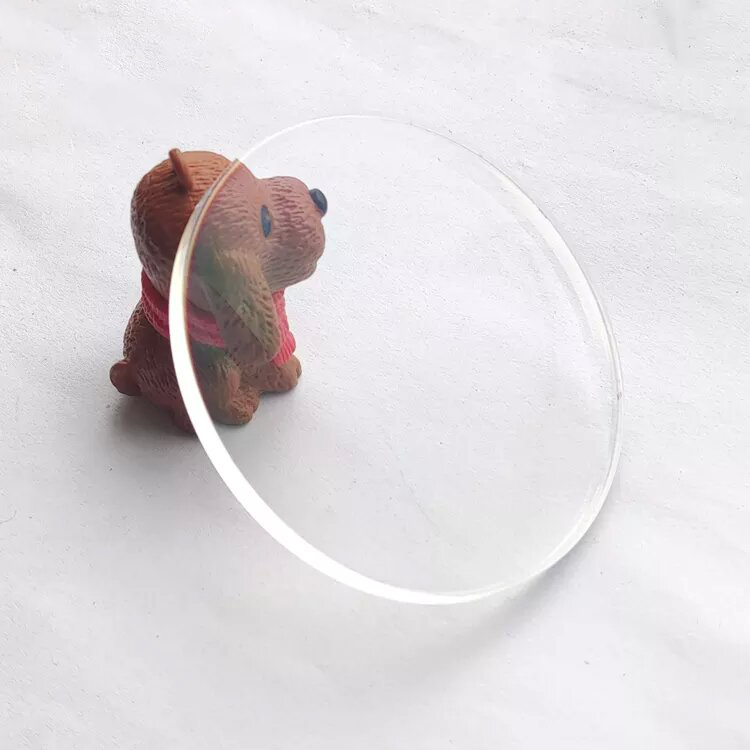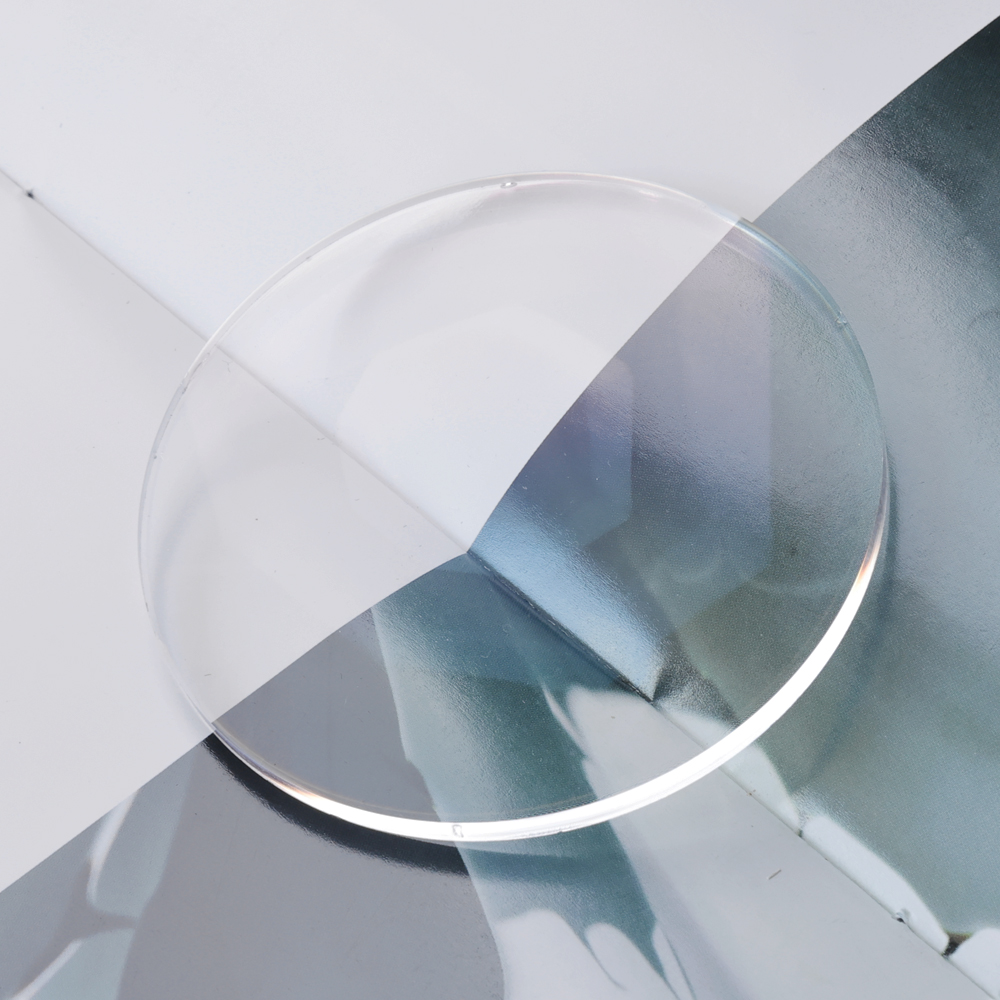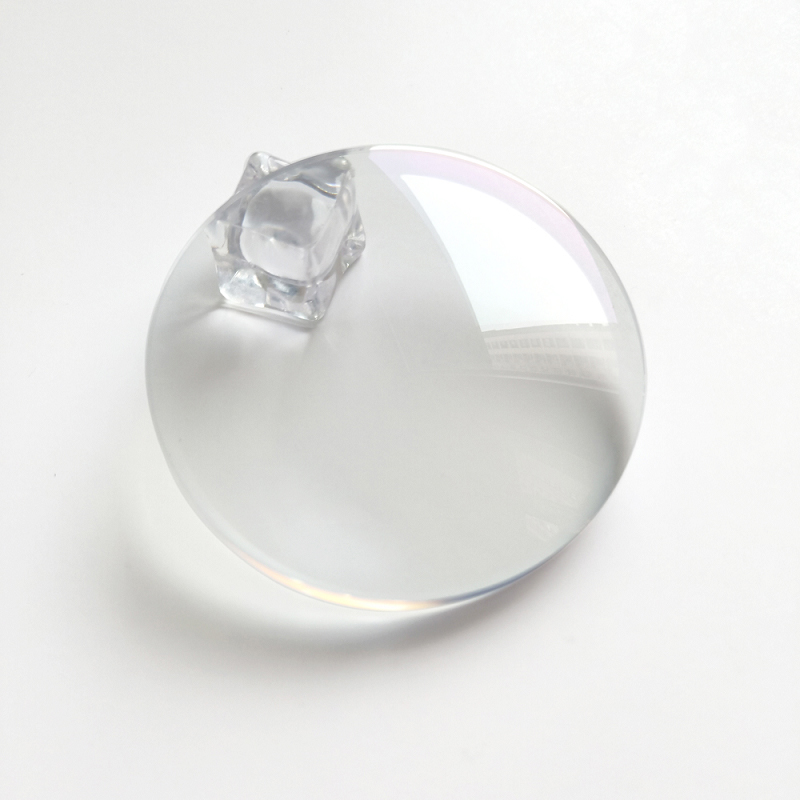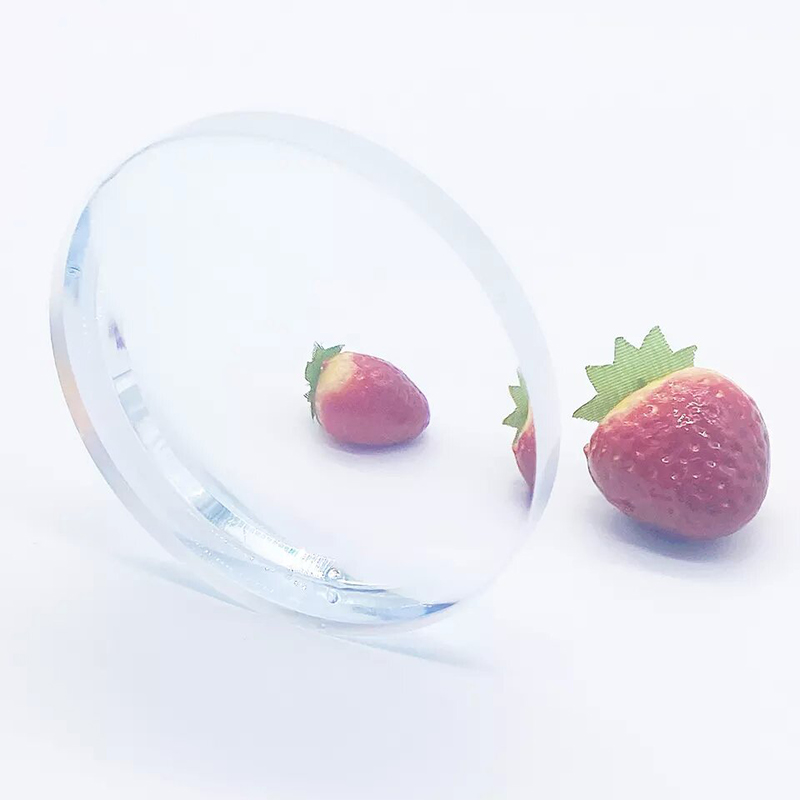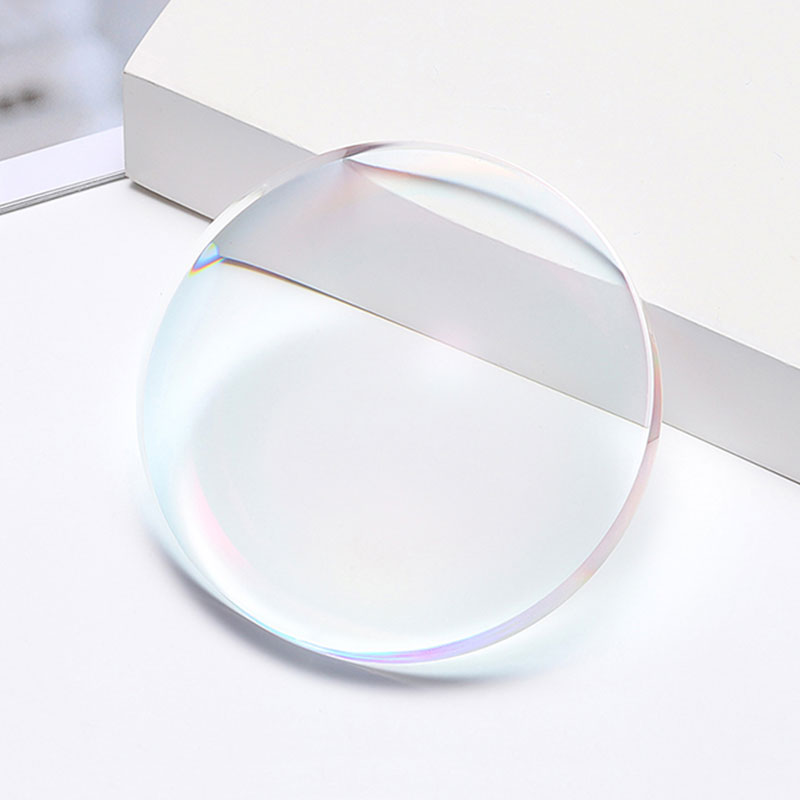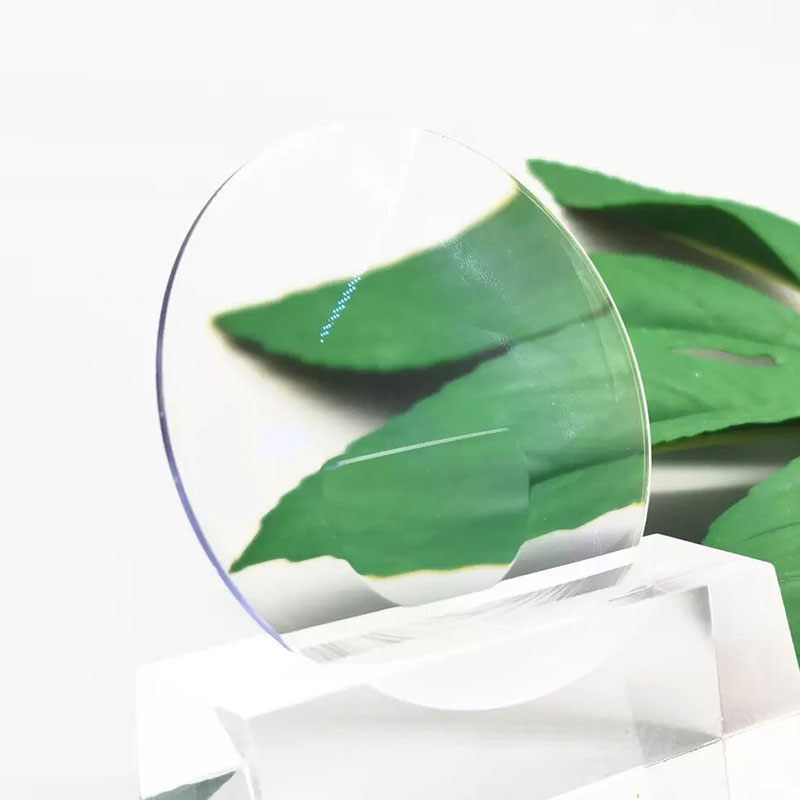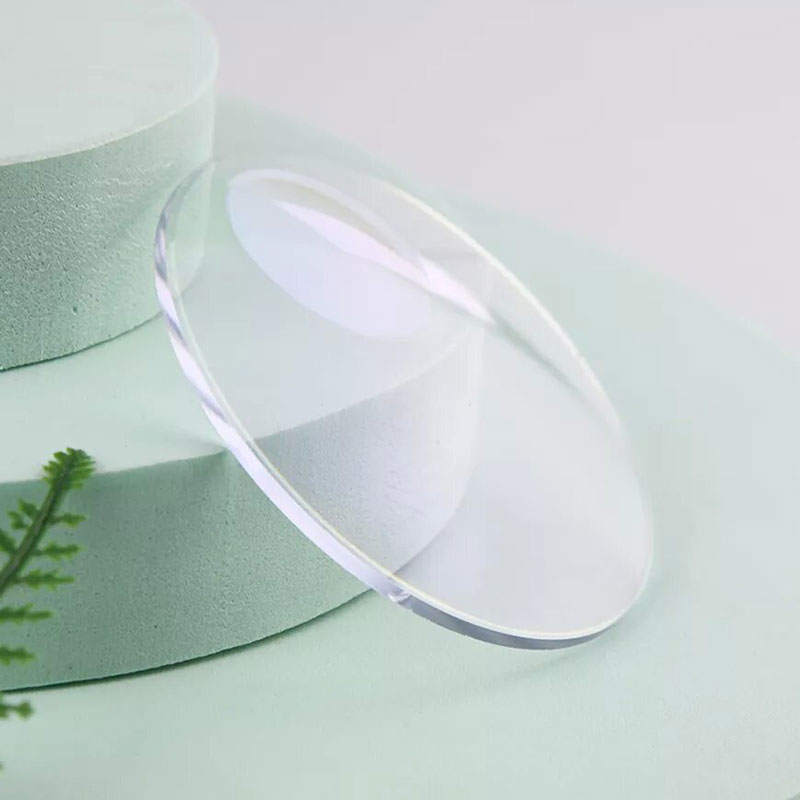Introduction of Blue Light
What exactly is blue light and why should we care about it?
Blue light belongs to the high-energy visible (HEV) portion of the light spectrum and is emitted from both natural and artificial sources. Naturally, sunlight contains blue light, which helps maintain alertness and supports healthy visual function during the day. Artificial blue light mainly comes from digital devices such as smartphones, tablets, computers, and LED lighting. As screen time continues to increase in the digital era, people are now exposed to blue light for much longer periods than before.
This growing exposure has raised concern due to its potential link with digital eye strain, a condition often characterized by dryness, blurred vision, and discomfort after long screen sessions. Blue Block Lens and computer glasses have become widely adopted solutions to address this issue. These glasses integrate a blue light filter that selectively reduces the transmission of HEV wavelengths, providing eye protection and eye strain relief while maintaining natural color clarity.
Blue light glasses are designed not only to make screen use more comfortable but also to support better rest. Excessive nighttime exposure to blue light can interfere with the body’s production of melatonin, the hormone responsible for regulating sleep cycles. By wearing these glasses during evening screen use, individuals may experience improved sleep quality and overall sleep improvement.
How Do Blue Block Lens Work?
Understanding how blue light glasses function is essential to realizing their role in reducing digital eye strain and supporting overall eye protection. These glasses are designed to filter harmful blue light while maintaining visual clarity, making screen use more comfortable and safer for prolonged periods.
How can glasses actually block blue light?
Blue Block Lens use a combination of lens technology and coatings to reduce the amount of high-energy visible light reaching the eyes. Their main mechanisms include:
Anti-reflective coatings:
Anti-reflective coatings minimize glare from screens, LED lights, and other reflective surfaces. Glare can make it difficult to focus on a screen, increasing eye fatigue and contributing to digital eye strain. By reducing reflections, these coatings improve visual comfort and allow for longer periods of focused work without causing dryness or blurred vision. This feature is particularly useful for office workers, students, and gamers who spend many hours in front of screens. In addition, anti-reflective coatings help maintain clear color perception, which is important for tasks that require accuracy, such as graphic design or video editing. They also enhance overall eye protection by preventing unnecessary strain on the eyes, making prolonged screen use less tiring.
Blue light filtering pigments:
Some lenses include pigments specifically engineered to absorb or block wavelengths in the range of 380–500 nanometers, which are the most energetic and potentially harmful portions of blue light. These pigments selectively reduce exposure while allowing other visible light to pass through, so users can enjoy natural color rendering. Filtering out high-energy blue light can prevent eye strain symptoms such as irritation, fatigue, blurred vision, and even occasional headaches. Over time, this filtering may also contribute to maintaining healthy sleep patterns by preventing melatonin suppression caused by nighttime screen exposure. By reducing the overall load on the eye muscles, these lenses help promote comfort during extended screen use.
Layered lens technology:
Advanced lenses often combine multiple layers that work together to filter blue light, protect against UV rays, and provide scratch resistance. Each layer has a specific function: one layer may focus on reducing glare, another on filtering high-energy wavelengths, and a final layer on ensuring durability. This combination allows computer glasses to offer comprehensive eye protection while remaining comfortable and reliable for daily use. Layered lenses are particularly useful for people who spend long hours in front of screens, providing consistent eye strain relief throughout the workday or evening hours. Some layered designs also enhance visual sharpness and reduce light scatter, which further reduces fatigue and helps maintain focus.
What types of blue light glasses are available?
Blue light glasses are available in several options to meet different needs and lifestyles:
Prescription lenses:
For individuals requiring vision correction, blue light filtering can be integrated directly into prescription lenses. This ensures users receive both vision support and eye protection without needing separate devices. Prescription blue light glasses are suitable for office workers, students, or anyone who spends long hours using digital devices. They reduce digital eye strain while allowing natural color perception and sharp vision, and they can be customized for varying strengths and prescriptions.
Non-prescription daily glasses:
These glasses are designed for general screen use and provide eye strain relief without the need for vision correction. They are lightweight and comfortable for prolonged wear, making them ideal for browsing, gaming, studying, or working on a computer. Many daily-use lenses also feature anti-reflective coatings and a moderate blue light filter, which balances protection and visual clarity. Some models also include stylish frames, allowing users to combine function with personal aesthetic preferences.
Clip-ons:
Clip-on lenses are a convenient option for individuals who already wear glasses. They can be easily attached or removed, offering flexibility when using screens at work or home. Clip-ons provide a practical solution for reducing blue light exposure without investing in a completely new pair of glasses. These lenses also help maintain natural sleep patterns by limiting melatonin disruption during evening screen time. Clip-ons are particularly useful for users who alternate between indoor and outdoor settings and want temporary blue light protection as needed.
Different designs offer varying levels of protection. Daytime lenses often provide partial blue light filtering to maintain alertness, while evening lenses are optimized for stronger filtering, supporting sleep improvement and reducing the negative effects of nighttime screen exposure. Choosing the right type of blue light glasses can make a noticeable difference in comfort, productivity, and eye health over time.
Benefits of Blue Block Lens
Wearing blue light glasses provides multiple advantages for visual comfort, performance, and overall well-being. These glasses reduce harmful blue light exposure from digital screens, LED lighting, and other artificial sources. They are particularly useful in today’s work and study environments where prolonged screen use is common. Regular use can make long hours of computer work, online learning, or gaming more comfortable, reduce digital eye strain, and contribute to long-term eye protection and overall visual health.
Can blue light glasses really reduce eye strain?
Digital eye strain, also called asthenopia, arises when the eyes are exposed to screens for extended periods without adequate rest. Common symptoms include dryness, irritation, blurred vision, fatigue, heaviness around the eyes, and occasional mild headaches. Blue Block Lens help reduce these symptoms in multiple ways, providing both immediate relief and long-term support for healthy vision.
Reducing glare and scattered light:
Anti-reflective coatings and blue light filters minimize glare from screens, LED lights, and reflective surfaces. Glare forces the eyes to work harder to maintain focus, increasing fatigue and discomfort. By controlling glare, these glasses make focusing easier and improve visual clarity. This can enhance productivity during long work sessions, reduce the need for squinting, and prevent eyes from feeling tired. Reducing glare also helps prevent eye strain during tasks that require precise visual attention, such as editing documents, analyzing data, or creating digital content.
Relaxing eye muscles:
High-energy blue light can cause eye muscles to overwork, particularly during long hours of screen use. Filtering this light reduces the strain on the muscles controlling the eyes, alleviating fatigue and tension. This not only increases comfort but also decreases the likelihood of developing headaches or pressure around the eyes. Over time, using blue light glasses consistently can help maintain healthier eye muscles, making it easier to sustain focus during prolonged work or study periods.
Maintaining visual clarity:
Effective lenses provide eye strain relief while maintaining accurate color rendering and natural brightness. This allows users to perform tasks without visual distortion or discomfort. For professionals and students, this is especially valuable during activities such as graphic design, coding, reading, and online learning. Maintaining clear vision while reducing strain supports prolonged productivity and reduces the need for frequent breaks caused by visual discomfort.
Do they help you sleep better?
Exposure to blue light in the evening suppresses melatonin, the hormone responsible for regulating the body’s natural sleep-wake cycle. When melatonin production is disrupted, it can delay sleep onset, reduce sleep quality, and make it harder to feel rested the next day. People who use screens late at night, such as for work, study, or entertainment, are particularly vulnerable to these effects. Blue light glasses can support better sleep by reducing the amount of high-energy visible light reaching the eyes, helping the body maintain its natural rhythms.
Filtering evening blue light:
Lenses designed specifically for evening or nighttime use block a higher percentage of HEV wavelengths. By reducing blue light exposure in the hours before bedtime, these glasses help the body recognize that it is time to prepare for sleep. This filtering can also reduce the stimulating effect of screens on the nervous system, helping to calm the mind and eyes after prolonged digital activity. People who wear these glasses consistently report easier transitions from work or study to rest and less difficulty falling asleep.
Promoting relaxation before bed:
Limiting high-energy light exposure in the evening reduces stimulation of the nervous system, allowing the body to transition naturally into a restful state. This can make falling asleep faster and support deeper, more restorative sleep. Evening use of blue light glasses can be combined with other practices such as dim lighting, reading in soft light, or gentle stretching to further enhance relaxation and prepare the body for a restorative night of rest.
Supporting overall sleep improvement:
Regular use of Blue Block Lens in the evening can improve both sleep duration and quality. When combined with healthy sleep practices, such as maintaining a consistent bedtime, avoiding late-night screen use, and creating a sleep-friendly environment, these glasses can help users wake up feeling more refreshed and alert. Over time, consistent use may lead to improved next-day focus, productivity, and energy levels, making it easier to manage daily tasks without feeling fatigued.
Can they relieve headaches and migraines?
Prolonged exposure to screens and high-energy visible light can trigger headaches or migraines in sensitive individuals. The combination of flickering screens, bright lights, and blue light wavelengths can strain the visual system and lead to discomfort. Blue light glasses can help reduce these issues in several ways:
Limiting high-energy light exposure:
Certain blue wavelengths can increase light sensitivity, which may provoke headaches or migraines. By filtering these specific wavelengths, the glasses reduce the intensity of visual stimulation and lower the risk of light-triggered headaches. This is especially helpful for individuals who work in office environments, play video games for long periods, or use multiple devices simultaneously.
Reducing visual strain:
Eye fatigue and tension in the eye muscles are common contributors to headaches. By minimizing visual strain, blue light glasses help prevent headaches caused by prolonged focus on digital devices or near work. This can also help individuals maintain better posture and reduce neck or shoulder tension that often accompanies eye fatigue.
Providing relief during prolonged screen use:
Individuals who spend several hours working on computers, studying, or gaming may notice a decrease in headache frequency and severity when using blue light glasses consistently. While they do not eliminate all headache triggers, they offer a practical and non-invasive way to reduce one common source of discomfort. Combined with regular breaks, proper lighting, and ergonomic setup, these glasses contribute to more comfortable screen use.
Do blue light glasses protect against macular degeneration?
Prolonged exposure to blue light has been linked in some studies to retinal stress, which could contribute to age-related macular degeneration over time. Although definitive long-term studies are limited, blue light glasses may offer potential protection through the following mechanisms:
Filtering high-energy wavelengths:
By reducing cumulative exposure to the most energetic visible light, these glasses help protect sensitive retinal cells. This filtering can reduce oxidative stress in retinal tissues and support long-term eye health, particularly for individuals who use digital devices extensively throughout the day.
Supporting visual comfort and health:
Early evidence suggests that reducing blue light exposure can decrease retinal stress and support sustained visual comfort. Regular use of blue light glasses may also alleviate symptoms of eye fatigue during daily digital activities, helping to maintain clear vision and comfort even after prolonged screen time.
Complementing other eye care practices:
Blue light glasses are most effective when used alongside healthy visual habits, such as taking frequent screen breaks, following the 20-20-20 rule, adjusting screen brightness, and scheduling regular eye exams. Together, these measures help maintain eye protection, reduce cumulative strain, and promote long-term visual health. Consistent use may also encourage mindfulness of screen time and more intentional eye care habits.
Even if long-term effects on macular degeneration remain under research, wearing blue light glasses provides a practical way to reduce retinal stress, enhance eye strain relief, and support healthier sleep patterns over time. These benefits make them a valuable tool for anyone regularly exposed to digital screens.
| Benefit | Mechanism | Applicable Scenario |
| Reduce eye strain | Minimize glare and high-energy blue light, relax eye muscles | Long hours of office work, studying, or screen use |
| Improve sleep | Block evening blue light, support melatonin levels, promote relaxation | Using computers, phones, or tablets at night |
| Relieve headaches and migraines | Reduce high-energy light stimulation and visual fatigue | People sensitive to light or heavy screen users |
| Protect retinal health | Filter high-energy blue light, reduce retinal stress | Long-term computer, phone, or digital device users |
| Enhance visual comfort | Maintain natural colors and clear vision | Design work, reading, or daily screen use |
How Blue Block Lens Can Improve Eye Comfort and Sleep?
Understanding the practical benefits of blue light glasses requires looking at scientific studies and research findings. Blue light exposure from digital screens, LED lighting, and other artificial sources can contribute to digital eye strain, disrupted sleep, and potential long-term retinal stress. Researchers have examined the impact of blue light filtering lenses on these areas, providing valuable insights for users seeking eye comfort and improved sleep quality. Although research is ongoing, current evidence highlights several important effects.
What does research say about Blue Block Lens?
Scientific studies have investigated how blue light glasses affect eye strain, sleep patterns, and overall visual comfort. Key findings include:
Reduction of digital eye strain:
Research consistently shows that wearing blue light blocking lenses during prolonged screen use can reduce common symptoms of digital eye strain, such as dryness, blurred vision, irritation, eye fatigue, and heaviness around the eyes. Participants in controlled studies often report noticeable relief after several hours of computer or tablet use, highlighting the role of blue light filtering in improving visual comfort. These glasses are especially beneficial for office workers, students, gamers, and anyone exposed to screens for multiple hours each day.
Sleep improvement:
Evening exposure to blue light can suppress melatonin, the hormone responsible for regulating sleep-wake cycles. Several studies indicate that using Blue Block Lens in the hours before sleep helps maintain natural circadian rhythms. Participants report faster sleep onset, fewer nighttime awakenings, and improved sleep quality. Combining glasses with healthy evening routines, such as dimming lights and avoiding late-night screen use, further enhances these effects, supporting overall sleep improvement and better next-day alertness and energy levels.
Mixed findings on visual fatigue and objective measures:
While subjective improvements in eye comfort are widely reported, some studies show limited measurable changes in physiological indicators such as blink rate, tear production, or eye muscle activity. This suggests that individual sensitivity to blue light, lens quality, screen brightness, and usage patterns can all influence results. Even in cases where objective data is inconclusive, many users still experience tangible relief from discomfort and visual fatigue.
Potential long-term benefits for retinal health:
Preliminary research suggests that reducing cumulative exposure to high-energy visible light may support retinal health and reduce stress on retinal cells. Although long-term studies are still limited, filtering blue light may potentially lower risks associated with retinal strain and age-related macular degeneration. Using blue light glasses alongside regular eye exams, screen breaks, and ergonomic practices may provide a holistic approach to long-term eye protection.
Are Blue Block Lens Right for You?
Deciding whether to use blue light glasses depends on your daily screen exposure, lifestyle, and personal eye health needs. These glasses are designed to reduce digital eye strain, support sleep quality, and enhance visual comfort. Their effectiveness varies depending on how and when they are used, the quality of the lenses, and individual sensitivity to blue light. Understanding who benefits most, potential limitations, and how to use them effectively can help you make an informed choice and integrate them into your daily routine for long-term eye protection and comfort.
Who should consider wearing blue light glasses?
Blue Block Lens are particularly helpful for individuals who spend long periods in front of screens or are sensitive to visual fatigue. Key groups include:
Office workers and professionals:
Individuals who work on computers, laptops, or digital devices for six or more hours daily are prone to digital eye strain. Common symptoms include eye fatigue, dryness, blurred vision, and occasional headaches. Wearing blue light glasses during work hours can reduce these discomforts, making prolonged screen use more comfortable and supporting sustained productivity. Over time, this can also help prevent chronic eye fatigue and improve long-term visual comfort.
Gamers and students:
Extended gaming sessions or study periods often involve high-intensity screen exposure, sometimes lasting several hours without breaks. Blue light glasses can help reduce eye fatigue, maintain focus, and prevent discomfort that could affect performance. For students, improved visual comfort may enhance concentration during online learning or reading. For gamers, it can reduce visual fatigue and help maintain alertness and reaction time during long sessions.
People with pre-existing eye conditions or sleep difficulties:
Individuals with dry eyes, asthenopia, or mild insomnia may notice additional benefits. Reducing blue light exposure, particularly in the evening, can help regulate melatonin, support sleep improvement, and promote more restorative sleep. Those with pre-existing eye sensitivity may also experience less strain and fewer headaches, making daily screen use more comfortable.
Frequent device users:
Anyone who regularly uses smartphones, tablets, or LED-lit devices for personal or professional purposes can benefit. Even moderate daily exposure to high-energy visible light contributes to cumulative eye fatigue, and blue light glasses can provide ongoing relief. Their use can also encourage better screen habits and awareness of eye health.
Are there any downsides to using blue light glasses?
While blue light glasses are generally safe and non-invasive, there are minor considerations to keep in mind:
Color perception changes:
Some blue light glasses, particularly those designed for strong nighttime filtering, may slightly alter the perception of colors. This is because lenses that block higher percentages of high-energy visible (HEV) light can subtly change how colors appear to the eye. For most everyday tasks, this change is minor and barely noticeable, but it could have a more significant effect on activities that require precise color accuracy. Professionals involved in graphic design, photography, video editing, digital art, or any detailed visual work may want to consider lenses with moderate blue light filtering during the day to ensure colors remain true. Even with strong-filter lenses, users often adapt quickly, and the benefits of reduced digital eye strain and improved visual comfort can outweigh minor color differences.
Unnecessary daytime use:
Wearing strong-filter blue light glasses during bright daylight is generally unnecessary and could slightly reduce alertness or visual clarity. High-intensity blue light during the day helps regulate natural circadian rhythms, improves mood, and increases alertness. Therefore, using heavy-filter lenses in full daylight may interfere with these natural effects. Moderate-filter lenses are more appropriate for daytime use, providing a balance between reducing glare and maintaining visual sharpness. Stronger filters are best reserved for evening or nighttime, when blue light exposure can interfere with melatonin production and disrupt sleep patterns. Proper timing and selection of lens strength allow users to gain maximum benefits from Blue Block Lens while maintaining natural energy levels and visual performance throughout the day.
When and how should you wear them for the best results?
Proper usage is key to maximizing the benefits of Blue Block Lens. Practical tips include:
During long screen sessions:
Wearing blue light glasses during extended digital tasks, whether for work, study, gaming, or entertainment, can significantly reduce digital eye strain. Prolonged screen exposure often causes eye fatigue, dryness, blurred vision, and discomfort in the neck and shoulders due to poor posture. Using Blue Block Lens helps relax the eye muscles, minimize glare, and reduce visual stress. This allows individuals to maintain concentration for longer periods, improves productivity, and enhances overall comfort while interacting with digital devices. Consistent use can also help prevent cumulative eye fatigue over days or weeks of intensive screen use.
Evening or pre-bedtime use:
Evening use of blue light glasses is particularly effective for supporting sleep improvement. Exposure to high-energy visible (HEV) light in the hours before bed can suppress melatonin, delay sleep onset, and reduce sleep quality. Wearing Blue Block Lens in the evening helps signal to the body that it is time to wind down, maintain natural circadian rhythms, and prepare for restorative sleep. This practice not only improves the ease of falling asleep but can also enhance sleep depth and duration. Users may notice increased alertness, cognitive performance, and energy levels the following day, making evening use an important part of a healthy digital routine.
Combine with healthy eye habits:
For optimal results, blue light glasses should be paired with healthy eye and screen habits. Regular breaks following the 20-20-20 rule, adjusting screen brightness and contrast, maintaining proper viewing distance, and ensuring ergonomic posture all enhance the effectiveness of Blue Block Lens. This combined approach helps reduce cumulative eye strain, prevent headaches, and maintain focus during prolonged digital work. Over time, consistent use encourages better awareness of screen time, promotes responsible device usage, and supports long-term visual health. Users who integrate these practices often experience less fatigue, improved comfort, and a reduced risk of chronic eye issues associated with extended screen exposure.
By understanding who benefits most and how to use blue light glasses effectively, individuals can take a proactive approach to managing eye comfort, supporting digital eye strain relief, and enhancing sleep quality while maintaining productive screen use.
Choosing the Right Blue Block Lens
Selecting the right blue light glasses is essential to reduce digital eye strain, support sleep improvement, and maintain long-term visual comfort. Multiple factors, including lens quality, frame comfort, UV protection, and personal lifestyle needs, influence which glasses are most effective. Understanding these aspects can help you choose glasses that provide both functional benefits and daily wearability while ensuring that your eyes are well-protected during prolonged exposure to digital devices.
What should you look for in lens quality and coating?
High-quality, optical-grade lenses are essential for maintaining clear vision, accurate color perception, and effective blue light filtration. Selecting the right lenses involves more than just choosing a pair that looks good—it requires understanding the technical features that ensure both eye protection and long-term visual comfort.
Blue light filtering percentage:
Verified filtering levels guarantee that harmful high-energy visible (HEV) light is effectively blocked. Consistent exposure to HEV light from digital screens, computers, tablets, and smartphones can lead to digital eye strain, blurred vision, and occasional headaches. Lenses with tested blue light filtering reduce these symptoms, supporting comfort during prolonged screen use. For evening or nighttime use, higher filtering percentages can also support sleep improvement by preventing melatonin suppression and helping maintain natural circadian rhythms.
Anti-reflective coatings:
Lenses with HMC or SHMC coatings reduce glare from digital screens, LED lights, and reflective surfaces, enhancing visual clarity and reducing visual fatigue. This is particularly important for tasks that require high attention to detail, such as reading documents, working on spreadsheets, graphic design, or video editing. Anti-reflective coatings also improve overall comfort by minimizing eye strain caused by reflected light, allowing users to focus on their tasks for longer periods without discomfort.
Durability and scratch resistance:
Well-coated lenses maintain optimal performance over time, preventing minor scratches or surface damage that can affect clarity and comfort. Durable coatings are especially valuable for those who frequently remove and store their glasses, clean them regularly, or use them in active work environments. High-quality scratch-resistant lenses ensure that blue light glasses remain effective and visually clear throughout their lifespan, providing consistent eye protection.
Practical performance and visual clarity:
Choosing lenses with verified blue light filter performance ensures both comfort and protection. High-performance lenses reduce digital eye strain while preserving natural color perception and sharpness, which is important for professional work or creative projects. These lenses allow users to work, study, or play on screens for extended periods without experiencing fatigue or visual discomfort.
High-quality lenses not only protect the eyes during prolonged screen exposure but also contribute to long-term eye health and overall well-being. By filtering blue light effectively, they help prevent cumulative eye stress, maintain visual clarity, and support restorative sleep patterns in the evening, creating a comprehensive solution for modern digital lifestyles.
Why does comfort and fit matter?
Comfortable frames are essential for encouraging consistent use of blue light glasses, particularly for individuals who spend prolonged hours working on computers, using tablets, playing video games, or performing other screen-intensive activities. Even the most advanced lenses cannot provide their full benefits if the glasses are uncomfortable or poorly fitted. Ensuring a proper fit and comfort enhances daily wearability, allowing users to experience sustained digital eye strain relief, reduce fatigue, and maintain visual clarity throughout the day.
Lightweight design:
Lighter frames reduce pressure on the nose bridge and behind the ears, preventing discomfort and soreness that can build up during all-day use. Heavy or bulky glasses can cause headaches, skin marks, or irritation, which may discourage consistent wear. Lightweight frames allow users to focus on tasks without needing to adjust or remove their glasses, increasing the practicality and efficiency of Blue Block Lens. For students, office workers, and professionals who spend eight hours or more in front of digital screens, lightweight lenses can make a significant difference in overall comfort and productivity.
Adjustable nose pads and flexible temples:
Customizable nose pads and bendable temple arms provide a secure, personalized fit. This ensures that the glasses stay in place during movement and maintain proper lens alignment with the eyes. A secure fit prevents visual distortion, reduces the risk of eye strain, and supports prolonged focus during activities like typing, designing, or gaming. Flexible adjustments also accommodate different face shapes, making it easier for users to find a comfortable position that does not interfere with daily tasks or physical activity.
Ergonomic balance:
Frames designed with balanced weight distribution prevent excess stress on the face, neck, and shoulders. Properly balanced glasses reduce tension in the muscles surrounding the eyes and head, which can accumulate during extended screen sessions. Ergonomic frames enhance the natural function of blue light glasses, as users can wear them comfortably for hours without additional physical strain. This feature is especially important for people who alternate between desk work, meetings, or mobile devices, ensuring consistent eye protection throughout varying daily routines.
Impact on effectiveness:
Comfortable glasses are more likely to be worn regularly, which maximizes the protective benefits of blue light filtering. Users who experience discomfort may remove or avoid wearing glasses, reducing the potential relief from eye fatigue, headaches, or disrupted sleep patterns. Well-fitted, comfortable glasses encourage consistent use, supporting long-term eye health and sustained visual comfort. Regular use combined with proper lens quality contributes to overall digital eye strain relief, improved focus, and better visual well-being.
In addition to comfort, well-fitted glasses enhance confidence and appearance, making it easier to wear them as part of a daily routine. By selecting frames that combine style, functionality, and ergonomics, users can achieve both practical protection and a personalized fit that supports healthy eye habits.
Should your glasses also block UV rays?
Combining blue light filtering with full UV protection is essential for comprehensive eye care. While blue light glasses are primarily designed to reduce digital eye strain and support sleep improvement, UV protection ensures that your eyes are safeguarded in both indoor and outdoor environments. Selecting lenses that offer both features provides complete visual protection, reduces discomfort, and supports long-term eye health.
Sun exposure:
Lenses with UV-blocking capabilities protect against harmful ultraviolet rays during outdoor activities, such as walking, driving, or sports. UV exposure can contribute to long-term eye conditions, including cataracts, retinal damage, and premature aging of the eyes. Glasses that combine blue light filter technology and UV protection ensure that your eyes are shielded from both high-energy visible light from screens and natural sunlight, providing a dual layer of protection.
Visual clarity and glare reduction:
Lenses that filter both blue light and UV rays help reduce glare from bright sunlight, reflective surfaces, and shiny objects. This improves visual comfort, especially during outdoor work, driving, or recreational activities, while maintaining natural color perception and sharpness. Clear vision with minimal glare reduces eye strain, supports focus, and enhances overall visual performance in varying lighting conditions.
Daily versatility and convenience:
Glasses that offer both blue light and UV protection are highly versatile, allowing users to transition seamlessly between indoor digital environments and outdoor spaces. Whether working on a computer, attending meetings, commuting, or enjoying outdoor leisure, these glasses provide continuous protection against digital eye strain, high-energy visible light, and ultraviolet rays. This all-in-one solution simplifies eyewear choices while maximizing eye safety throughout daily activities.
Long-term eye health benefits:
Consistent use of glasses with combined blue light and UV protection can help preserve visual acuity and prevent cumulative eye stress over time. By reducing exposure to harmful wavelengths both from screens and sunlight, these glasses support sustained comfort, reduce fatigue, and contribute to overall ocular well-being. For individuals who spend significant time both indoors and outdoors, this combination ensures comprehensive protection without needing to switch between different pairs of glasses.
Selecting blue light glasses with built-in UV protection is an investment in both short-term visual comfort and long-term eye health. It ensures that users not only experience digital eye strain relief but also maintain optimal vision in diverse lighting conditions, supporting a healthier, more comfortable daily life.
Blue Block Lens Product Options
Different Blue Block Lens products offer specific features tailored to various prescriptions, usage patterns, and lifestyles. Understanding the differences helps you choose lenses that maximize comfort, protection, and visual clarity.
1.56 Blue Block Lens HMC/SHMC:
The 1.56 Blue Block Lens with HMC or SHMC coatings is designed for lightweight, everyday use, making it ideal for office work, reading, and casual digital device exposure. These lenses offer moderate blue light filtering, effectively reducing digital eye strain while preserving natural color perception, allowing users to maintain comfort and clarity during prolonged screen use. The HMC or SHMC coatings provide anti-reflective and scratch-resistant properties, ensuring long-lasting performance and consistent visual comfort. This lens is best suited for professionals, students, and light digital users who require balanced protection without compromising everyday usability or visual clarity.
1.56 Blue Block Anti-Fog Lens SHMC:
The 1.56 Blue Block Anti-Fog Lens SHMC is specifically designed for environments where fogging may occur, such as humid spaces or when wearing masks. The SHMC coating prevents lens fogging, ensuring clear vision during transitions between indoor and outdoor conditions. In addition to fog-resistant performance, these lenses filter harmful blue light, helping to reduce eye fatigue and digital eye strain during extended screen sessions. This lens is particularly suitable for healthcare workers, frequent travelers, and anyone exposed to variable temperatures who needs reliable visual clarity and eye protection throughout the day.
1.59 Blue Block PC Lens:
The 1.59 Blue Block PC Lens is made from impact-resistant polycarbonate, providing durability and protection against accidental drops or impacts. Its lightweight design ensures comfortable wear over long hours, while the blue light filtering feature reduces eye strain and supports visual comfort for heavy device users. This lens is ideal for students, gamers, and active professionals who require strong, durable protection combined with effective digital eye strain relief. The polycarbonate material makes it particularly suitable for individuals who need a resilient lens for high-activity environments.
1.60 Blue Block Lens HMC/SHMC:
The 1.60 Blue Block Lens with HMC or SHMC coatings offers a higher refractive index for thinner lenses, making it suitable for mild prescriptions without adding bulk. Enhanced coatings improve anti-reflective and scratch-resistant performance, maintaining visual clarity during extended screen use. These lenses provide all-day comfort and support sleep improvement when worn in the evening, thanks to effective blue light filtering. This product is best suited for office workers, online learners, and professionals who spend long hours on digital devices and seek both comfort and functional eye protection.
1.67 Blue Block Lens HMC/SHMC:
The 1.67 Blue Block Lens is designed for stronger prescriptions, offering thin and lightweight lenses without compromising visual quality. These lenses provide high optical clarity while effectively filtering harmful blue light, reducing digital eye strain during prolonged screen use. Ideal for extended workdays or gaming sessions, the 1.67 lens combines style and function, making it suitable for designers, office workers, and frequent screen users who require both visual comfort and aesthetic appeal. Its design ensures minimal eye fatigue even during long periods of digital activity.
1.74 Blue Block Lens SHMC:
The 1.74 Blue Block Lens SHMC is designed for individuals with very strong prescriptions, providing thin, lightweight lenses that maintain visual clarity and comfort. The SHMC coating offers superior anti-reflective and scratch-resistant properties, while the blue light filtering function helps reduce digital eye strain during extended screen exposure. This lens is ideal for users with high prescriptions who want effective eye protection, comfort, and clarity throughout the day. Its combination of thin design, protective features, and long-term durability makes it suitable for professionals, students, and digital device users who require both functionality and comfort.
Each lens type provides specific advantages depending on your prescription, lifestyle, and screen exposure. Choosing the right Blue Block Lens ensures that your blue light glasses protect your eyes effectively, remain comfortable throughout the day, and maintain visual appeal, making them an essential tool for modern digital life.



 English
English Español
Español

